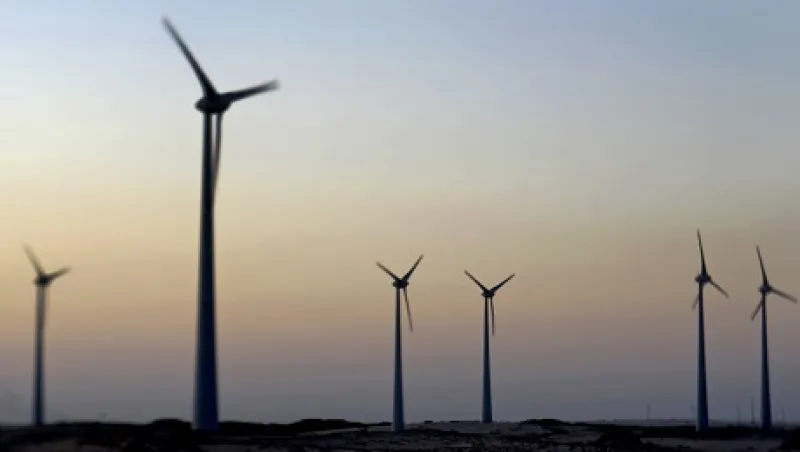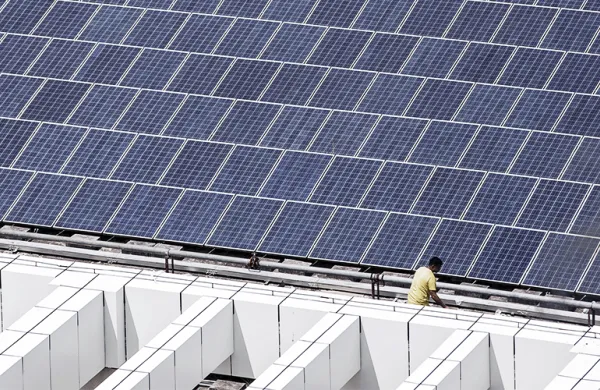Zurich Insurance Group recently joined a roster of increasingly big-name institutions investing in green bonds. The Swiss insurance giant, which invested in the high-grade, fixed-income securities through an external manager (though it did not tell Institutional Investor the size of the investment), follows asset manager BlackRock; California State Teachers’ Retirement System; St. Paul, Minnesota–based 3M Co.; and New York–based financial services firm TIAA-CREF, all of which invested in a February green bond offering by International Finance Corp., the Washington-based World Bank Group’s private sector division.
The first green bonds were launched by the World Bank in late 2008. Since then, a number of other issuers have joined the fray, including the European Investment Bank, the African Development Bank, the Nordic Investment Bank and the Export-Import Bank of Korea. The past 18 months have seen the market’s fastest growth yet. In that period the market has nearly doubled, from $5 billion to about $9.5 billion.
As one of the original architects of the green bond, Christopher Flensborg, head of sustainable products and product development at Sweden’s Skandinaviska Enskilda Banken (SEB), says he believes he is helping to oversee what he calls “the birth of a new market.” In a recent conversation with II, Flensborg explains why he believes the impact of green bonds means much more than facilitating funding for climate-friendly projects.
Are you noticing any changes in the tone of your recent conversations with investors about green bonds?
When you come up with a new product, there’s always some concern, and there’s due diligence that needs to be done. But what we’re seeing now is a bigger priority placed on how to integrate green bonds. People are realizing that it’s not so difficult to integrate them into their portfolios, and consequently they’re much more open to including them. This is due to the growth of the market, and the diversity of the issuers now appearing, and the broader contribution among asset managers and banks.
What do you think the impact of the green bond is on the larger investment market?
One of the things that I think is interesting is the transparency you get with a green bond — with the issuers coming out and explaining what they’re doing with the money. This also becomes an educational process about what is happening with respect to climate-related stress. People are talking about floods in New York or droughts or fires, and what can be done about those.
The reason that’s interesting from a financial perspective is because we’re all exposed to climate-related risks in various parts of society and regions [in our portfolios], though we might not be aware of it. Take the example of flooding in New York. In the lower-lying regions that flooded [during Hurricane Sandy], you will probably see house prices be slightly more sensitive and insurance premiums reflecting slightly more caution because the risks suddenly seem different than they did a year ago. That’s just one example — you had the same in Copenhagen, you had the same in Seoul, you had the same in Bangkok in the last couple of years. That’s just one climate event, and it indicates that we need to be more alert to what can actually happen, and how it can impact financial valuations.
Discussions around green bonds are helping many investors get educated about this.
So in terms of accounting for climate-related risks within a portfolio, you present green bonds as a first step.
It’s not the end solution, but it’s a good way to dip a toe in and get an idea about what is needed to raise awareness and thereby reduce risks and optimize the potential of a portfolio — that’s the way I see it.
Do you believe that green bonds are less risky than other similarly rated infrastructure bonds that don’t explicitly take climate into account?
The way we do them today, there’s no difference in the risk of green bonds versus nongreen bonds. We build them on the same framework as other bonds, and that means the risk is identical.
However, I would claim that an issuer who has awareness about his exposure and about strategies to [mitigate these climate events] is less risky than one that does not. In other words, I do think you could say that in the case of two different issuers of bonds with the same rating, where one has an awareness about these climate areas and the other does not, the one with awareness potentially has a lower risk — but that is for the rating agencies to say, not me.
What is the role that other banks need to play in developing the green bonds market?
That is slightly more complicated. I’m glad you’re raising that because attention toward this might enable banks to change their attitudes. Basically, banks are built in silos. Individual silos are responsible for various things. I think some of these silos might be interested in green [products], but they don’t really know how to go about it. One of the advantages we’ve had as a smaller bank is that we can bridge the silos quite easily. I’m basically able to have meetings very high within my organization and across the organization, which has enabled us to create what we’ve created; and I think the silos in big banks are preventing that. One of my big challenges when I have to approach the big banks is who to approach and how to approach them — and how to get consolidated feedback from that institution. However, the big banks do have an interest, and I think the individual silos do have an interest in joining us. So my approach is that I try to find the right entrance and then I try to find out how, together, we can continue to develop this market.
We’re aware that we can’t create this market by ourselves. We can’t bring this to the large scale we’re aiming for by ourselves. We know that we need the big banks.
But some of the major banks, like those that underwrote the recent IFC green bond issuance, have gotten on board, right?
Yes, they’re beginning to get active, and we welcome that warmly. We see that as a strength of the market, and we also see it as a slight danger. We see it as a strength because it’s necessary to get more and more investors on board and to raise awareness to the point that it’s a mainstream product. But we also would see it as a danger in the event that some banks could start trying to create their own versions of the green bond. That would start to dilute the perception of the bond, and it would confuse investors.
So one of the other reasons we’re going after the big banks is because we need to make sure we consolidate the development of this market to make sure it doesn’t become confusing. There needs to be a common understanding of what a green bond is.
Where is the green bond development now in terms of the path to the final market you envision for it?
In the late stages of the early phase. We have asset managers entering the green bond market on a bigger scale for the first time.
I think from here, the next big thing we’ll see will be different kinds of asset managers introducing strategies on how to offer their clients green bonds. And then slowly you will see this work down to the retail level. And that will drive the banking industry to come up with more issuance.
The ideal situation — and where we’re moving — is that we look more like the regular bond market. That means we still need to create a proper yield curve and we still need to create a proper credit curve. And in order to do that, we need different sorts of issuers. We’re very dedicated to bringing new issuers in from along the curve. We’re working with a number of corporates; we’re working with other banks. We see this happening; my own ambition is that it’ll happen fast.
The other thing is we need to see the structure of the creation of green bonds getting more standardized so that there’s a smooth process for getting new issuers through the system.
Are there any other “green” financial products that might spin out from all the work SEB has done on green bonds?
Thanks to the green bonds, we’re in a privileged situation because we’ve managed to get a lot of information, and we’ve used that to develop new solutions. My mandate at the moment is fixed income, but we are working on other things as well, which we’ll be able to offer in the next couple of years.
SEB is also in active dialog with several governments to see how the green bond concept can be used, or fine-tuned and used, to source money towards sustainable energy, infrastructure and development aid. We expect the results of this work to be seen in the market over the next two to five years.





